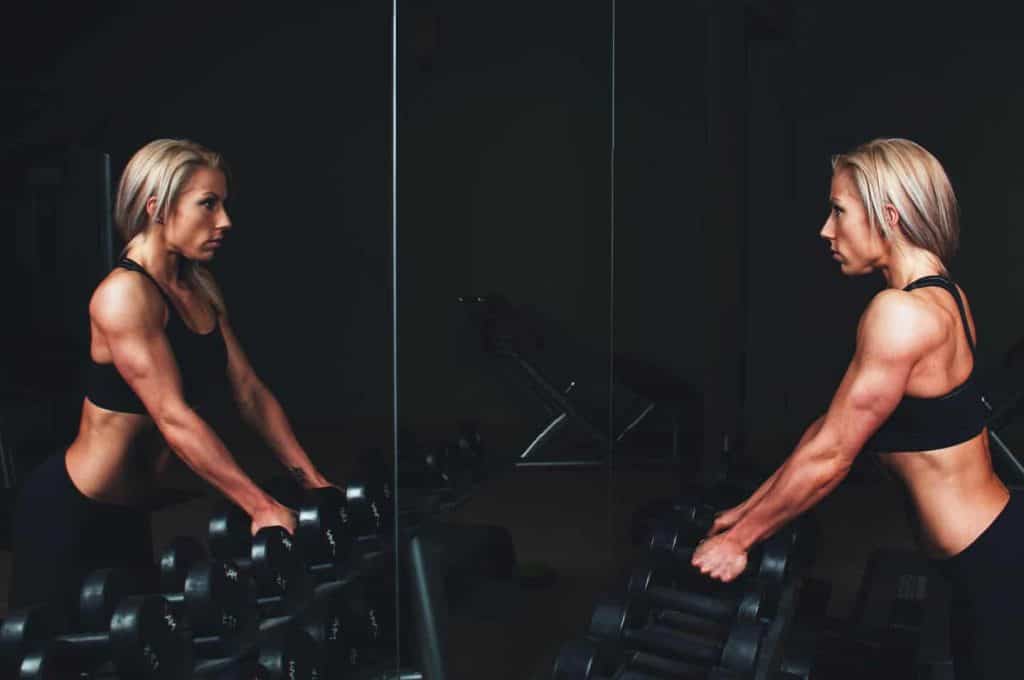The biceps receive proportionally a lot of attention. They are the classic epitome of strength. When we talk about “muscles,” it usually refers to the biceps.
Check the following link for all biceps exercisesLarge Upper Arms
The upper arms are formed by three muscle groups: the shoulders (Deltoids), Triceps (back), and biceps (front). The triceps are much larger than the biceps. So if you really want bigger arms, you’ll achieve this faster by doing triceps exercises. Especially in relaxed form, the triceps contribute more to the size of your arm. However, the biceps are often the showstoppers. Perhaps because they are very easy to flex.
Biceps Anatomy
The biceps can be divided into 2 muscles and 3 parts:- The biceps brachii consisting of the long head (brachii longus, outer) and short head (brachii brevis, inner)
- The brachialis (below the biceps).
Two Heads of the Biceps
The long head of the biceps is located on the outside of the biceps. The short head on the inside. Both heads attach to two different
Brachialis
Although we mainly think of the biceps as flexors of the arm, the brachialis is the most important motor for this. The brachialis also has only the function of bending the arm. The biceps also help rotate the hand outward.Biceps Training Practice
When training the biceps, there are two important variables that determine where you emphasize:- The position of the elbow relative to the torso
- The angle of the hand
Biceps Training Theory
But why are these different executions important? Let’s delve deeper into that. During the bicep curls, the arms are bent and then straightened. The upper arms remain in that movement next to the torso. The biceps (and brachialis) shorten and thus pull on the attachment to the forearm. Like a rope pulling from the shoulders to the forearm. By then exerting less force than the resistance, the muscles are stretched again, and the forearm descends.Muscle Tension-Length Relationship
You may be familiar with the fact that during this exercise, you are strongest when you are about halfway through the movement. This has to do with the so-called muscle tension-length relationship [1]. Muscles shorten by the actin and myosin filaments sliding over each other. The extent to which they have already slid over each other determines how much force they can further overlap/shorten. As mentioned, the long and short head of the biceps attach to different points on the shoulder blade and reach them via a different path. This means that both are influenced differently by bringing the elbow forward or backward. As a result, the heads are shortened or lengthened to different extents. This may mean that one head may be more capable of delivering maximum force than the other. This principle is seen in muscles that span two joints and is called active and passive insufficiency . Now we can translate this into practice. What does this mean when you perform, for example, the preacher curls where the elbows are already brought forward? Or if they stay behind the torso as in incline curls?Elbows in Front or Behind the Torso?
Brazilian researchers asked themselves this question in 2009 as well. They decided to compare the three different types of curls by measuring their effect on the muscles [2].
Dumbbell, Barbell, or EZ-bar?
These different positions of the elbow are therefore much more important than what you use to perform the exercise. In addition to dumbbells, you can also perform these with a straight barbell or a curved bar (EZ-bar). Italian researchers found last year that it doesn’t matter much which one you use [3]. However, there were differences. The EZ-bar turned out to provide the highest activation of the biceps. The difference compared to curls with dumbbells was large enough for statistical significance. Also, the activation of the biceps with the curved bar was greater than with a straight bar. However, this difference was only statistically significant in the eccentric phase (when the arms are stretched again). Because these differences, although significant, are not very large, you can choose based on personal preference. A straight bar can quickly cause wrist injuries, so there is already a reason to choose the curved bar or dumbbells.
Biceps Injuries
The attachments of the biceps are very injury-prone. Moreover, the biceps are relatively small for the attention they receive. This means that the risk of overtraining and injuries is relatively high. You can prevent injuries by warming up properly, taking enough rest, and performing the exercises correctly. If you still run into problems and have problems with the attachments, read the article on tendon injuries.Exercises for the Biceps
- Barbell curl (especially long and short head)
- Dumbbell curl (all parts of biceps)
- Concentration Curls (especially long and short head)
- Spider curls (especially long and short head)
- Drag curls
- Dumbbell Hammer curl (brachialis, outside)
- Cable/rope hammer curl (brachialis, outside)
- Cable curl (especially long and short head)
- Preacher curls (especially long and short head)
- 21s (especially long and short head)
References
- Lieber, r.l. (2002) Skeletal muscle structure and function. Williams & Wilkins, Baltimore
- Oliveira LF, Matta TT, Alves DS, Garcia MA, Vieira TM. Effect of the shoulder position on the biceps brachii emg in different dumbbell curls. J Sports Sci Med. 2009;8(1):24–29. Published 2009 Mar 1.
- Marcolin G, Panizzolo FA, Petrone N, et al. Differences in electromyographic activity of biceps brachii and brachioradialis while performing three variants of curl. PeerJ. 2018;6:e5165. Published 2018 Jul 13. doi:10.7717/peerj.5165
- suppversity.blogspot.com/2011/07/suppversity-emg-series-biceps-brachii.html

